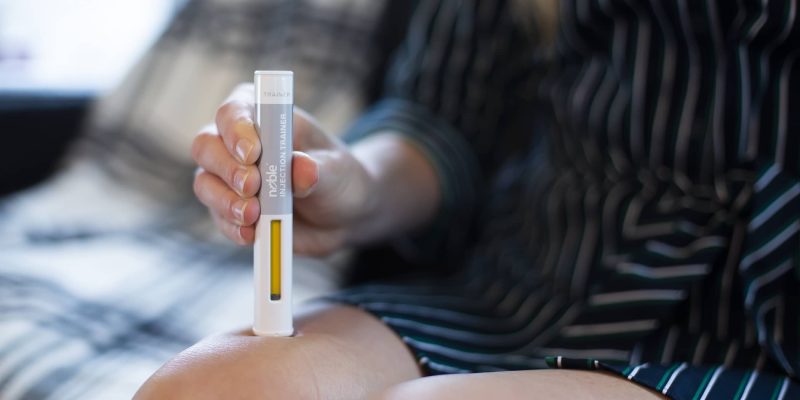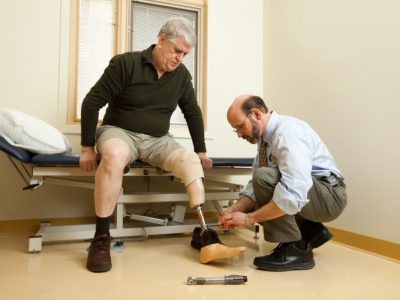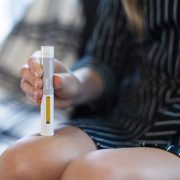
Why Autoinjector Training is Essential for Specialized Equipment Users
For individuals who rely on specialized equipment, such as autoinjectors, to administer medication, mastering proper techniques through comprehensive training is essential. Autoinjectors are designed to deliver medication quickly and efficiently in emergency situations, but without proper training, users may not be able to effectively utilize these devices. From understanding the importance of proper technique to enhancing safety and maximizing the efficacy of medication delivery, autoinjector training plays a crucial role in ensuring the well-being of patients.
The Importance of Proper Technique
Proper technique is crucial when using an autoinjector to administer medication. It ensures that the medication is delivered in the correct dosage and to the intended site, maximizing its effectiveness. Training provides users with the knowledge and skills required to correctly handle the device and perform the necessary steps for medication administration. This includes techniques such as holding the autoinjector at the correct angle, positioning it on the appropriate injection site, and applying the right amount of pressure for medication delivery.
Enhancing Safety and Minimizing Risks
Autoinjector training also focuses on safety measures to minimize risks associated with medication administration. Users learn how to properly handle and store the device to prevent accidental triggering or exposure to heat and moisture that may affect medication potency. Additionally, training covers key safety considerations, such as avoiding injection into arteries or nerves, preventing needlestick injuries, and managing potential allergic reactions or side effects. By understanding and implementing these safety practices, users can minimize the potential risks and ensure their own well-being.
Maximizing the Efficacy of Medication Delivery
Efficient medication delivery is essential to achieve the desired therapeutic effects. Autoinjector training teaches users how to optimize medication delivery, ensuring that the correct dosage is delivered at the right depth and speed. This includes factors such as the injection site, needle length, and angle of insertion. Through training, users gain a thorough understanding of how these variables can impact the effectiveness of medication absorption and distribution in the body. By mastering the techniques for maximizing medication delivery, users can optimize the therapeutic outcomes and improve their overall health.
Understanding Autoinjector Components and Functionality
Before diving into the training techniques, it is important to have a solid understanding of the components and functionality of an autoinjector. This knowledge will provide users with a clear understanding of how the device works and how to handle it properly.
Anatomy of an Autoinjector
An autoinjector typically consists of a barrel, plunger, needle cover, and a trigger mechanism. The barrel holds the medication, while the plunger is responsible for applying pressure to administer the medication. The needle cover protects the needle and is removed prior to use. The trigger mechanism is the component that is pressed to initiate the injection.
How Autoinjectors Work
Autoinjectors are designed to simplify the process of medication administration. When the trigger mechanism is pressed, it activates the spring-loaded mechanism within the device. This mechanical force pushes the plunger forward, injecting the medication through the needle and into the patient’s body. The user does not need to manually push the plunger, as the autoinjector’s mechanism provides the necessary force for injection.
Common Types of Autoinjectors
There are various types of autoinjectors available on the market, designed to meet the specific needs of different medications and individuals. Some autoinjectors are pre-filled with medication and are disposable after a single use, while others allow for multiple doses and require the user to change the cartridge or refill the device. Common examples of autoinjectors include those used for the administration of epinephrine, insulin, and certain immunosuppressive drugs. Understanding the specific type of autoinjector being used is important for proper training and administration of medication.
Mastering Autoinjector Techniques for Optimal Medication Administration
Mastering autoinjector techniques is essential for users to confidently and efficiently administer medication. Proper training equips individuals with the knowledge and skills required by professionals who are specialized autoinjector training equipment to perform the necessary steps for medication administration accurately.
Step-by-Step Guide to Using an Autoinjector
Using an autoinjector involves a series of steps that need to be followed accurately. A step-by-step guide provided during training can help users understand and memorize the process:
- Remove the cap or needle cover from the autoinjector.
- Hold the autoinjector firmly with one hand, making sure your fingers are away from the trigger.
- Position the autoinjector at the recommended injection site, ensuring proper angle and pressure.
- Press the trigger firmly to initiate the
- Hold the autoinjector in place for the recommended duration, ensuring complete delivery of medication.
- Remove the autoinjector from the injection site and dispose of it properly, following local regulations and guidelines.
Mastering these steps through training enables users to perform the administration process smoothly and with confidence.
Troubleshooting Tips for Autoinjector Use
During training, users also learn how to troubleshoot common issues that may arise while using an autoinjector. These issues may include difficulties in triggering the device, injections that do not seem to deliver medication effectively, or accidental needlestick injuries. By understanding the underlying causes of these issues and learning the appropriate solutions, users can troubleshoot problems effectively, ensuring successful medication administration.
Exploring Advanced Techniques
Advanced techniques in autoinjector training go beyond the basic steps and address specific scenarios or challenges users may encounter. This includes techniques such as self-injection in hard-to-reach areas, managing injections with limited mobility, or performing injections on others. By exploring these advanced techniques, users can develop the skills to handle unique situations confidently.
Overcoming Challenges and Developing Confidence with Autoinjector Training
Autoinjector training not only equips users with the necessary skills but also addresses specific challenges and helps build confidence in medication administration.
Addressing Needle Anxiety and Pain
Needle anxiety and fear of pain are common challenges associated with autoinjector use. Training provides strategies to overcome these challenges, such as relaxation techniques, distraction techniques, or the use of numbing creams or ice packs. By addressing needle anxiety and pain, users can administer medication with greater ease and reduce the psychological burden associated with injections.
Dealing with Unique Scenarios and Special Considerations
Autoinjector training also covers special considerations and unique scenarios that users may encounter. This includes factors such as injecting into different areas of the body, adapting techniques for children or elderly individuals, or managing injections during travel or in emergency situations. By understanding these specific scenarios and considering the individual needs of patients, users can adapt their techniques accordingly, ensuring safe and effective medication administration.
Building Self-Assurance Through Practice and Support
Repetition and practice are essential in mastering autoinjector techniques. Training provides opportunities for users to practice the administration process under the supervision of healthcare professionals. This hands-on experience builds self-assurance and allows users to receive feedback and guidance to further improve their skills. Additionally, support networks, such as patient support groups or online communities, can provide a platform for users to share their experiences, seek advice, and receive emotional support, enhancing their overall confidence in autoinjector use.
In conclusion, mastering autoinjector training is crucial for individuals using specialized equipment. It ensures the proper technique, enhances safety, and maximizes the efficacy of medication delivery. By understanding the components and functionality of autoinjectors, users can handle the devices correctly. Through step-by-step guides, troubleshooting tips, and exploration of advanced techniques, users gain the skills to confidently and efficiently administer medication. Autoinjector training also helps users overcome challenges and develop self-assurance through addressing needle anxiety, managing unique scenarios, and building support networks. By investing time and effort in comprehensive autoinjector training, users can become proficient in the use of specialized equipment and empower themselves to effectively manage their medication needs.
FAQ
Question: What is autoinjector training? – Autoinjector training is a comprehensive training program that teaches individuals how to properly use specialized autoinjector devices to administer medication. It covers techniques for correct handling, injection site selection, and medication delivery.
Question: Why is proper technique important in autoinjector administration? – Proper technique is essential in autoinjector administration to ensure that medication is delivered in the correct dosage and to the intended site. It maximizes the effectiveness of the medication and reduces the risk of complications.
Question: What safety measures are covered in autoinjector training? – Autoinjector training focuses on safety measures to minimize risks associated with medication administration. This includes proper handling and storage of the device, avoiding injection into arteries or nerves, preventing needlestick injuries, and managing potential allergic reactions or side effects.
Question: How does autoinjector training enhance the efficacy of medication delivery? – Autoinjector training teaches users how to optimize medication delivery by considering factors such as injection site, needle length, and angle of insertion. This helps ensure that the correct dosage is delivered at the right depth and speed, maximizing the therapeutic effects of the medication.
Question: What are the components of an autoinjector? – An autoinjector typically consists of a barrel, plunger, needle cover, and trigger mechanism. The barrel holds the medication, while the plunger applies pressure to administer the medication. The needle cover protects the needle, and the trigger mechanism activates the injection.
Question: How do autoinjectors work? – Autoinjectors utilize a spring-loaded mechanism. When the trigger is pressed, the spring pushes the plunger forward, injecting the medication through the needle and into the patient’s body. No manual pushing of the plunger is required.
Question: What types of autoinjectors are available? – There are various types of autoinjectors available for different medications and individuals. Some are pre-filled and disposable, while others allow for multiple doses and require cartridge changes or refills. Examples include autoinjectors for epinephrine, insulin, and certain immunosuppressive drugs.
Question: How can autoinjector training help overcome needle anxiety and pain? – Autoinjector training provides strategies to address needle anxiety and pain, such as relaxation techniques, distraction techniques, or the use of numbing creams or ice packs. These techniques help users administer medication with greater ease and minimize discomfort.
Useful Resources:










